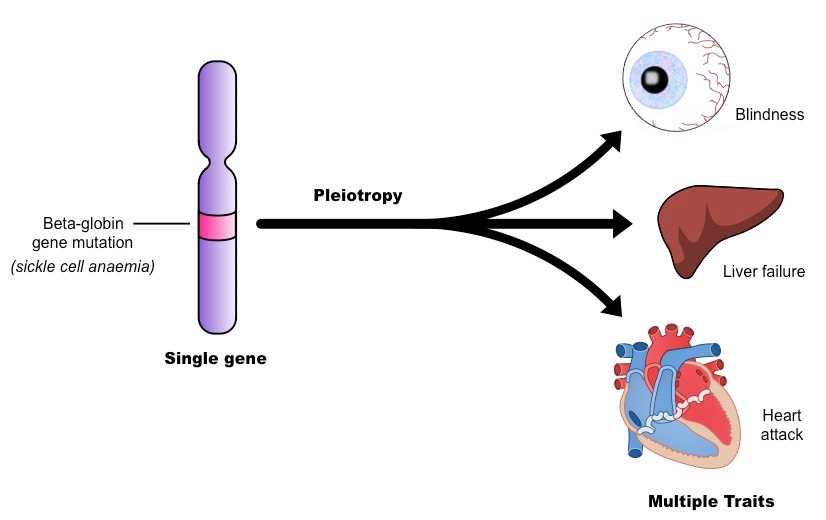BIOL10008: Meiosis, Inheritance and Genetic Analysis
1/28
Earn XP
Description and Tags
Concepts 14 and 15
Name | Mastery | Learn | Test | Matching | Spaced |
|---|
No study sessions yet.
29 Terms
What are haploid and diploid cells?
gametes contain one set of chromosomes (23 chromosome pairs in humans, 22 autosomes, a pair of sex chromosomes), the number of chromosomes is denoted by ‘n’ and is haploid
During reproduction, two haploid gametes fuse to form a zygote in fertilization. The zygote has two sets of chromosomes (46 chromosomes in humans), its chromosome number is ‘2n’ and is diploid
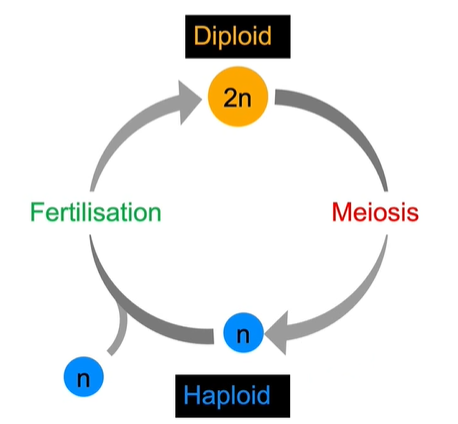
What is meiosis?
Diploid parent cell divides to produce haploid daughter cells, forms gametes
It reduces the chromosome number from diploid (2n) to haploid (n)
It ensures that each of the haploid products has a complete set of chromosomes.
It generates genetic diversity among the products.
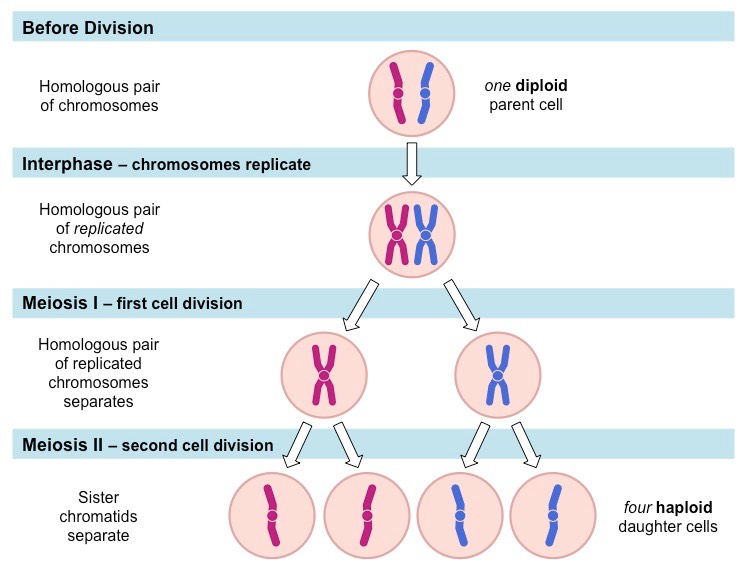
What is the structure of a chromosome prior and after DNA replication? What are homologous chromosomes?
Prior to DNA replication, chromosome only has one chromatid
2 sister chromatids produced through DNA replication linked together by a centromere in the centre
Homologous chromosomes are a pair of chromosomes, one inherited from each parent
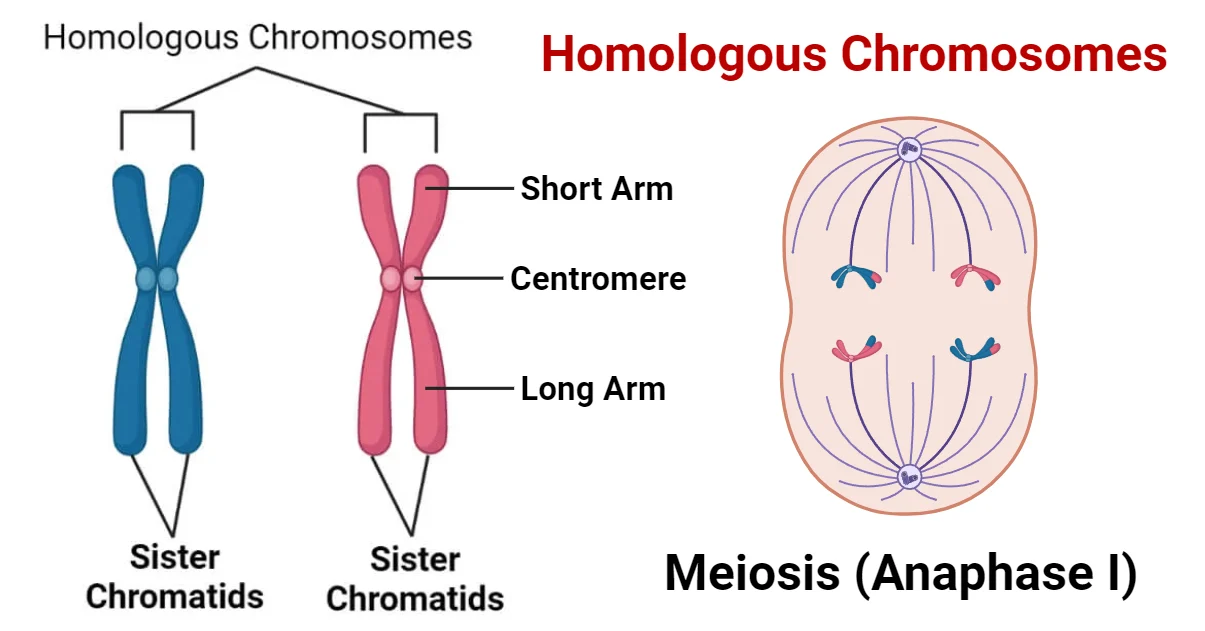
List general differences between mitosis and meiosis.
mitosis occurs in somatic cells, meiosis occurs in germ cells
Mitosis results in 2 identical diploid daughter cells, meiosis, meiosis results in 4 non-identical haploid daughter cells
Mitosis has one nuclear division, meiosis has two separated nuclear divisions
What is meiosis 1?
Called reductional division (number of chromosomes reduced to haploid), producing 2 haploid cells from a diploid cell
1. Homologous chromosomes come together to pair along their entire lengths. No such pairing occurs in mitosis.
2. The homologous chromosome pairs separate, but the individual chromosomes, each consisting of two sister chromatids, remain intact
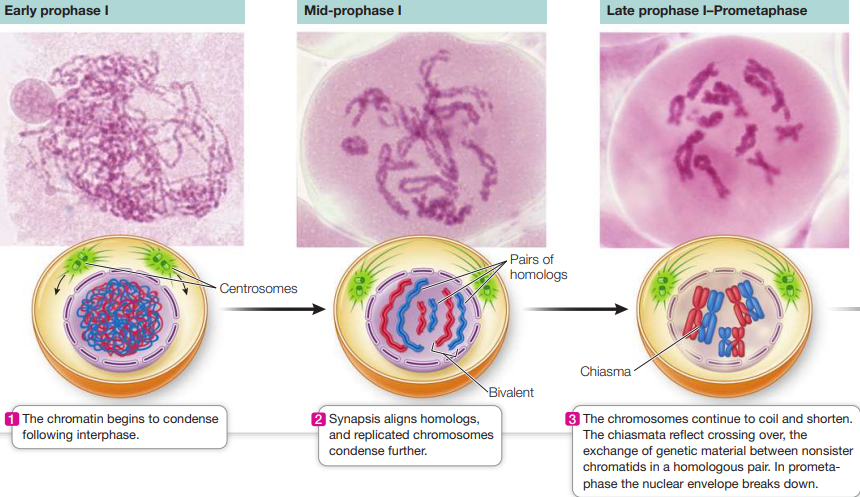
What occurs in prophase 1?
chromatin begins to condense
Homologous chromosomes pair and adhere along their lengths in a process called synapsis
Crossing over (exchanging genetic material) between homologous chromosomes occur which can be seen as chiasmata, resulting in recombinant chromatids which increases genetic variation among the products of meiosis
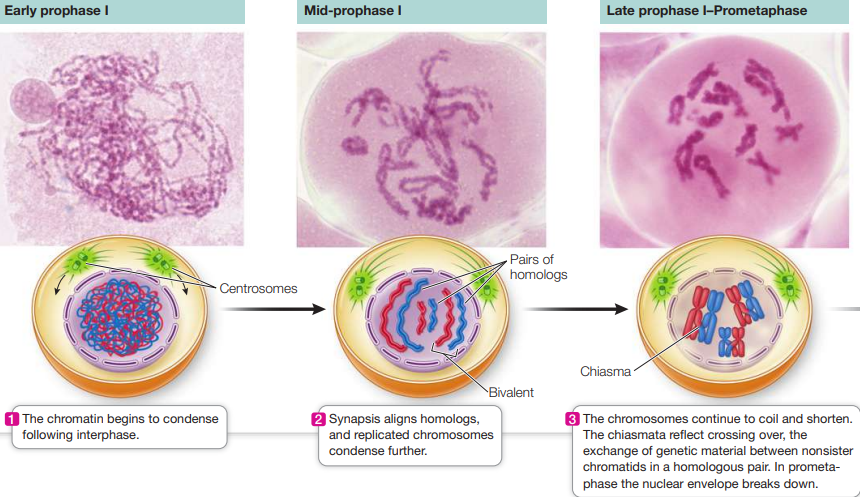
What occurs in metaphase 1, anaphase 1 and telophase 1?
Metaphase 1 - homologous pairs line up at the metaphase plate
Anaphase 1 - homologous replicated chromosomes move to opposite poles of the cell, sister chromatids of each chromosome, remain attached to one another and don't come apart
Telophase 1 - The chromosomes decondense, nuclear membrane forms around each haploid genome, and the original diploid cell divides into 2 haploid cells through cytokinesis
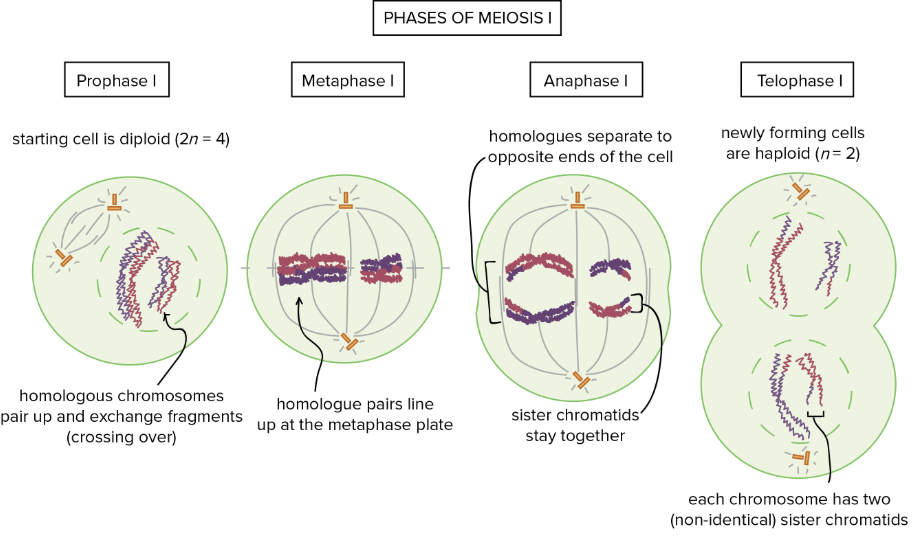
What is meiosis 2?
Daughter haploid cells from meiosis 1 each divided into two haploid cells (no reduction occuring)
Can either start immediately after meiosis 1 or after interphase
DNA does not replicate in interphase
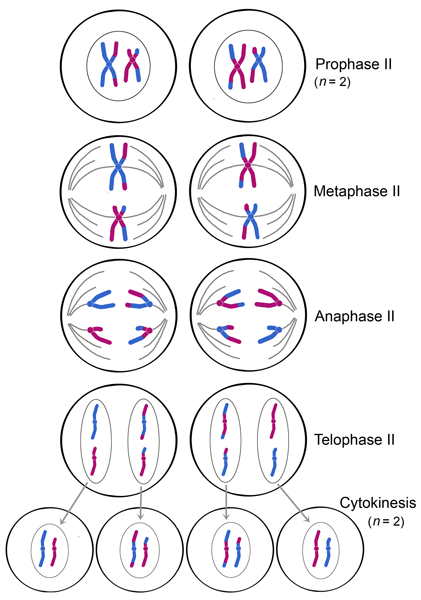
Describe each stage of meiosis 2.
Prophase 2 - chromosomes condense
Metaphase 2 - centromeres of the paired chromatids line up across the metaphase II plate of each cell
Anaphase 2 - sister chromatids separate and move to opposite poles
Telophase 2 - reformation of nuclear envelopes and recondensation of chromatids, cytokinesis divides each parental cell into two haploid cells
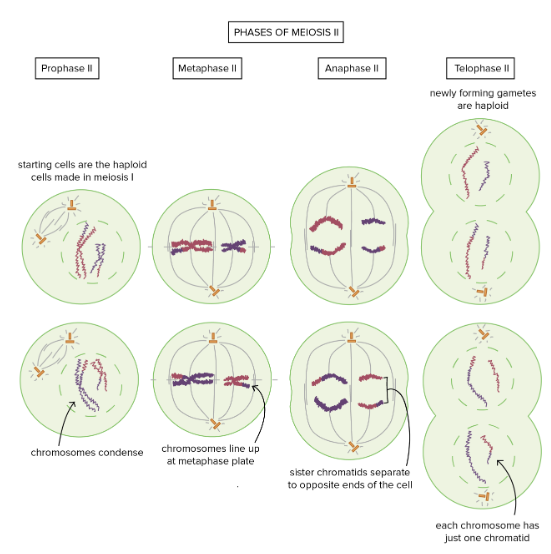
Explain how meiosis provides different genetic combinations
crossing over of homologues in prophase 1, allowing exchange of genetic material and formation of recombinant chromosomes
Independent assortment
random orientation of homologous chromosome pairs in metaphase 1
random separation of homologous chromosomes in anaphase 1 and random separation of sister chromatids in anaphase 2

Describe the differences in each stage between mitosis and meiosis 1.
Prophase:
Mitosis does not involve the pairing of homologous chromosomes or crossing over
Metaphase:
In meiosis, homologous pairs align at the metaphase 1 plate, in mitosis, individual chromosomes align at the plate
Anaphase:
In meiosis centromeres do not separate and sister chromatids remain together, in mitosis, centromeres separate and sister chromatids separate
Meiosis 2 is similar to mitosis
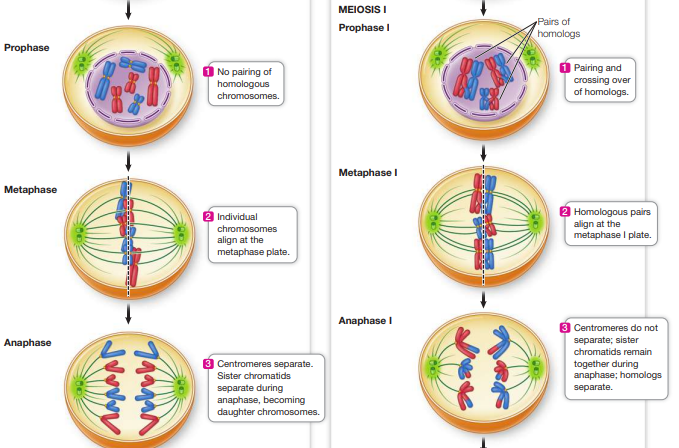
Describe errors in meiosis
Nondisjunction:
Anaphase 1 - homologous chromosomes fail to separate
Anaphase 2 - sister chromatids fail to separate
Results in aneuploid cells where one or a few chromosomes are either lacking or present in excess - leads to offspring with either one too many, or one too few, chromosomes in all of their cells
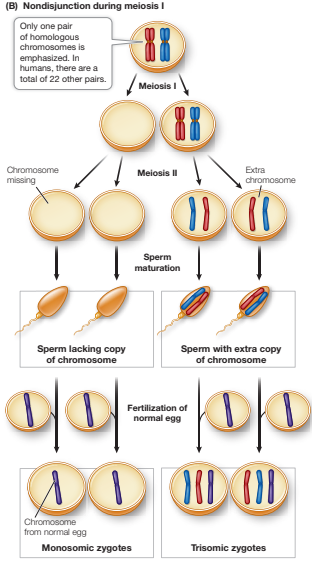
What is Mendel's first law of allelic segregation? How does the Law of Segregation relate to the partitioning of chromosomes during meiosis?
During gamete formation, two alleles coding for the same gene separate, so that each gamete will contain one allele for that gene.
In meiosis 1, homologous chromosomes separate from each other

What is a monohybrid cross? Why might it be important for a monohybrid cross that the parents are homozygous?
Breeding experiments that vary by a single trait
Homozygous parents (pure breeding) allow for observation of a single trait and whether the trait is inherently dominant or recessive:
allows predictable genotypes
Will give 3:1 phenotypic ratio, 1:2:1 genotypic ratio in F2 generation
eliminates confusion from hidden alleles

Why is a Punnett square useful? In what circumstances is a Punnett square not required?
Can determine the expected probability of inheriting a phenotype (if inheritance pattern is known) and the possible genotypes an offspring can inherit from two parental genotypes
difficult when there are more than two traits or where traits are not independently inherited
What is the purpose of a chi squared test? How to determine the expected number of each phenotypic class of progeny?
To compare observed results with expected results, test null hypothesis (differences are due to chance)
Determines if it is due to chance or due to a relationship of the variables being studied
Use predicted F2 phenotypic ratio and apply to total number observed
Describe what is meant by a sex-linked trait. How can we distinguish between a trait which is autosomal dominant and one which is sex-linked dominant
Trait influenced by gene on a sex chromosome (either X or Y)
Autosomal dominant - all offspring will be affected regardless of the affected parent (male or female)
Sex-linked dominant (on X chromosome) - Female parent affected, all offspring will inherit and display trait, Male parent affected, only female offspring will inherit as male offspring inherits Y chromosome from male parent
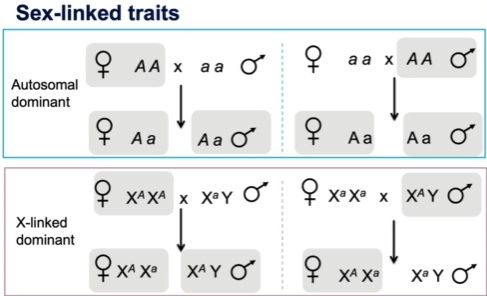
Explain why X-linked disorders are more common in males than females.
Males only have one X chromosome
Therefore, they only require one mutated X to be affected
What is a mono hybrid cross?
Cross between two parents who are heterozygous (hybrid) for a single trait (mono), dihybrid (two traits)
Phenotypes dependent on dominance of trait
Complete dominance - 3:1
Incomplete dominance or codominance - 1:2:1
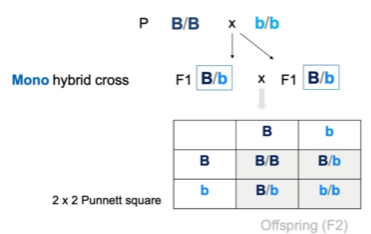
What is a back cross?
Hybrid crossed with an individual that has the same genotype of either of their parents
If trait is completely dominant, backcross involving parent with recessive alleles would enable observation of the alleles from the hybrid parent
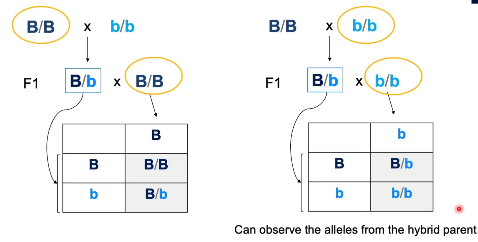
What is a test cross?
involves breeding, or crossing, the unknown genotype with a known homozygous recessive genotype
used to to determine the genotype of organism exhibiting dominant trait (either homo or heterozygous)
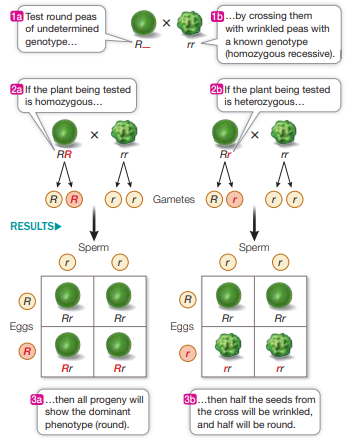
What is a reciprocal cross?
Two crosses, same trait but sexes reversed in the second cross
Used to determine if inheritance pattern is influenced by the parental sex
Ex:
A female expressing the trait with a male not expressing the trait.
Reciprocal: Cross a male expressing the trait with a female not expressing the trait.
What are lethal alleles?
An allele which results in the death of an organism - always involves an essential gene which are necessary for survival
Dominant lethal allele - homozygotes and heterozygotes that inherit the allele will die
Recessive lethal allele - only results in death of homozygotes that inherit the allele, 2:1 phenotypic ratio resulting from the cross of 2 heterozygous parents would indicate recessive lethal allele

What is a pedigree? What do the symbols represent?
A diagram showing the presence or absence of a trait through different generations of a family, used to analyse pattern of inheritance
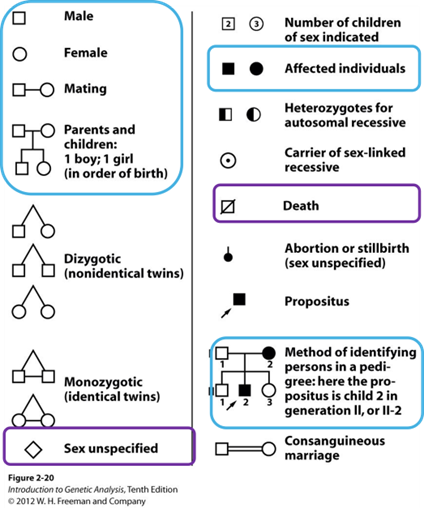
How to determine whether a trait is dominant or recessive in a pedigree?
Dominant traits do not skip a generation- about half offspring of one affected parent are affected
A recessive trait can skip generations, as parents can be heterozygous and be carriers without exhibiting the trait - only small proportion affected
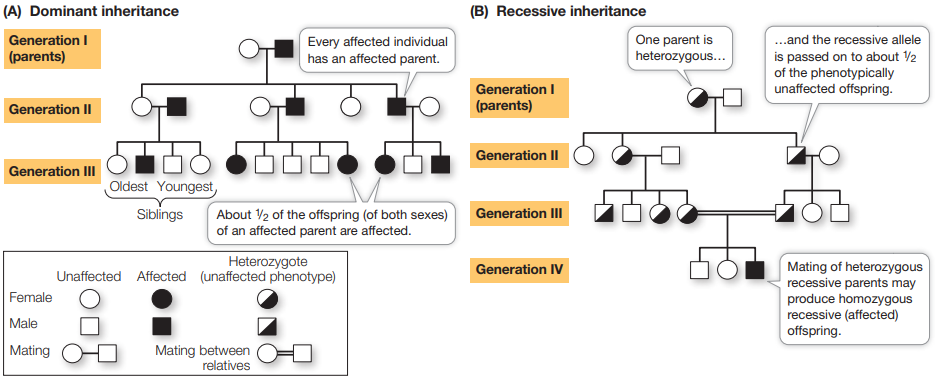
How to determine whether a trait is autosomal or x-linked in a pedigree?
Autosomal dominant - affected father passes the disease to a son, not possible in X-linked as male offspring inherit x chromosome from mother
x-linked dominant - females tend to be more frequently affected
Autosomal recessive - tend to skip generations
x-linked recessive - can skip generation, males tend to be affected more frequently than females in a population, presence of an affected daughter from unaffected parents indicates not XR
What is the product rule?
For independent events X and Y, the probability (P) of them both occurring (X and Y) is P(X) * P(Y), both events occuring
Ex: Cross between two heterozygous individuals, what is the chance of getting an ‘aa’ individual in the next generation?
= (probability of mother contributing a) x (probability of father contributing a) = (1/2)*(1/2) = 1/4.
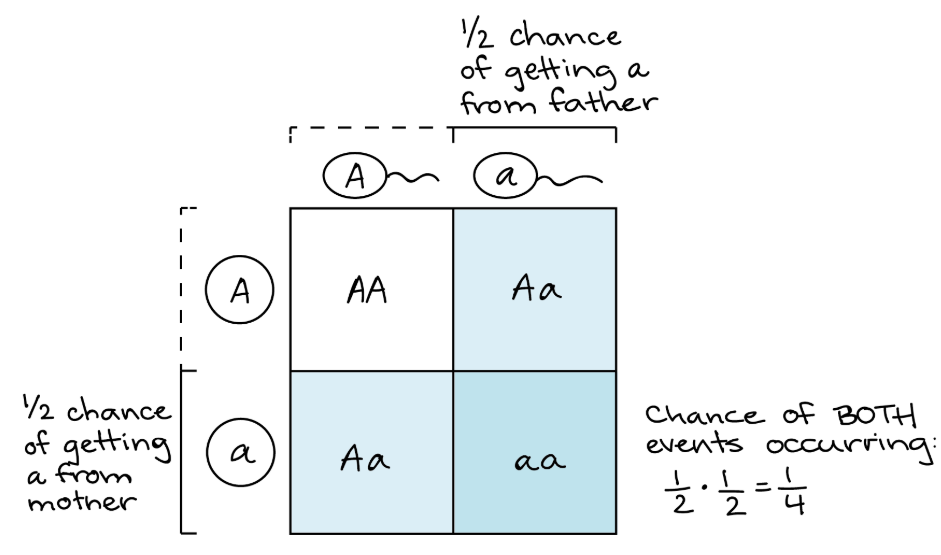
What is the sum rule?
Probability that one of several events will occur. For mutually exclusive events X and Y, the probability (P) that one will occur (X or Y) is P(X) + P(Y)
Ex: predict the fraction of offspring from an Aa x Aa cross that will have the dominant phenotype
(probability of A from Mom and A from Dad) + (probability of A from Mom and a from Dad) + (probability of a from Mom and A from Dad) = ¼ + ¼ + ¼ = ¾

What is Pleiotropy?
phenomenon in which a single gene locus impacts multiple, seemingly unrelated phenotypic traits
Ex: defects in the SOX10 gene can cause WS4, which can cause defects in pigmentation, hearing impairments, and an absence of intestinal contractions necessary for movement of waste out of the body
